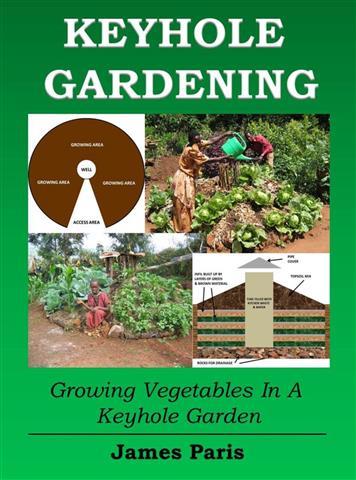What Is A Keyhole Garden
The term ‘keyhole garden, comes from shape of the garden area itself. This is basically a round structure roughly about 9 foot in diameter with a wedge cut into it – just like slicing a cake!
In the center of this structure – which is about 3 foot deep in the middle – is a round well formed from wire mesh. So looking from above you have a shape not unlike a keyhole.
This form of gardening was originally developed by the charity ‘sendacow.org ’ who are heavily involved with working with African villages where conditions for growing vegetables are harsh, and materials scarce.
’ who are heavily involved with working with African villages where conditions for growing vegetables are harsh, and materials scarce.
The Keyhole Garden simply offered a solution to the many problems the African villages faced when attempting to grow vegetables.
And so was born the Keyhole garden. This gardening method utilises the scarce materials available, and through the methods we will see later in this article, and indeed elsewhere , converts them into viable soil suitable for growing a range of vegetables.
, converts them into viable soil suitable for growing a range of vegetables.
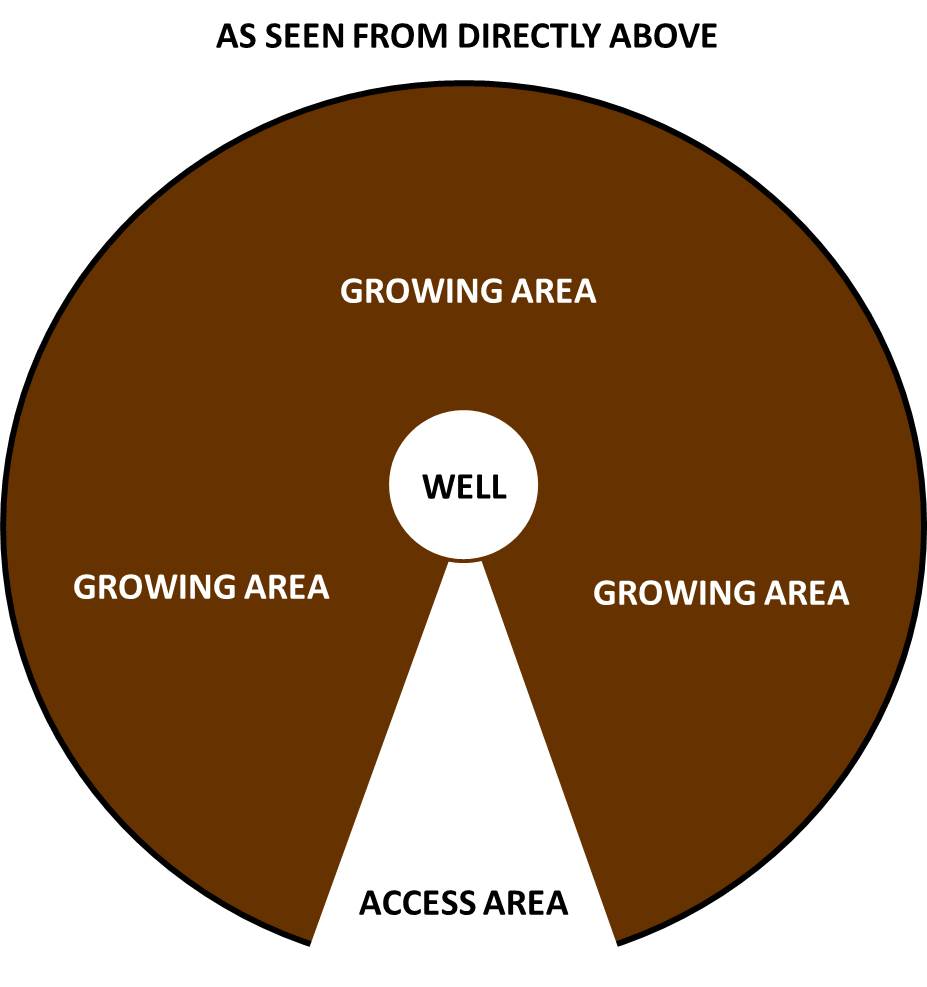
Brief Outline:
- Locate a suitable site for the keyhole garden area, without overhanging trees or obstacles
- Assemble the keyhole garden with the structural materials you have chosen
- Fill in the area with a mix of soil and compost to the level required
- Fill in the center well with organic material such as grass cuttings and kitchen vegetable cuttings
- Plant the vegetables and water the center well thoroughly
Building A Keyhole Garden
First of all you create a structure similar to the one in the picture. This can be made from bricks, concrete block, timber, corrugated iron, in fact anything that you may have to hand that is suitable for this structure.
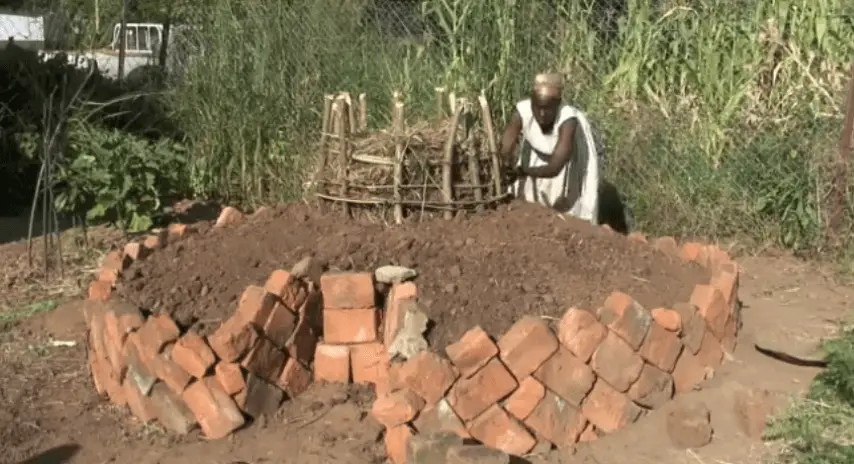
The design is fairly simple with the important part being the center well, which is basically a 12-18-inch-wide cylinder formed with strong wire mesh.
This must be strong enough to withstand the pressure of the surrounding soil once the area is filled in. Although once the internal ‘ingredients’ are added (more later) this is not so much of an issue as it will become self-supporting to a large degree.
The dimensions do not have to be exact but as a guide, the sides should be 24-30 inches high and the center is built to around 6-12 inches higher. This will give a slight ‘cone’ shape to the Raised Bed area.
Keyhole Gardening On Amazon
The general idea, is that you have access to the center well at all times as this is the ‘engine room’ of your keyhole garden.
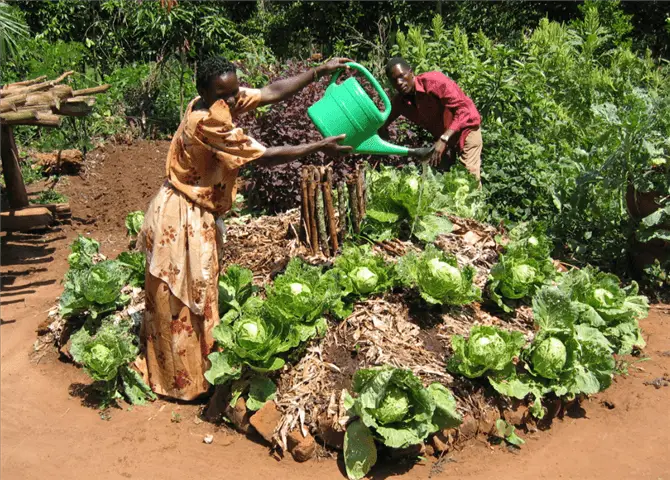
Filling a Keyhole Garden.
Once the structure has been formed it is time to fill it in. This can be done exactly the same way as you would fill in a deep raised bed garden. To take up some of the volume you would throw in a variety of old wood or organic detritus such as fallen leaves at the bottom of the bed.
Be careful not to let any of your infill into the center well at this point.
You can also add hay or straw, even newspapers and cardboard (no coloured paper though). The idea is to build up the bed until about 12 inches from the top. This is where most vegetables will grow unless you plan on planting tap-root veggies where you may want the actual growing soil a little deeper.
For your topsoil you want to add a good soil/compost mix, just as you would for any other veggie garden. A mix of 50-50 compost & topsoil mix is ideal, and throwing in a few handfuls of vermiculite will always help.
While you can just infill with topsoil, it is not advisable if you want to get the best results as topsoil alone in a confined area such as this is liable to become compact over time.
Now the center well. As mentioned, this is the ‘engine room’ of the keyhole garden and it works like this.
Organic matter such as kitchen waste, newspaper, grass cuttings, potato peelings, egg shells etc, along with some worms (red wriggler are best) are all thrown into this well, watered regularly and allowed to decompose.
As the material decomposes it leaches out nutrients into the growing area surrounding it. This well is constantly being topped up with new material and so is continually feeding the surrounding area.
In some ways this is similar to the lasagna gardening method, but the advantage here is that you can just keep adding waste material to keep the growing area nutrient rich over many seasons.
Maintaining A Keyhole Garden
This is a simple matter of watering the well area especially on a regular basis as you do not want in to dry out completely. These worms need a moist area to work in and do their composting magic!
You may find in time that the bed will ‘settle down’ but this is normal and just needs to be topped up occasionally with new soil.
Keep a lid on the center well to keep vermin out. Also a top tip is to put 1 inch chicken mesh on the bottom of the well itself – or even over the whole area. This will prevent vermin from making a new home amongst your veggies!
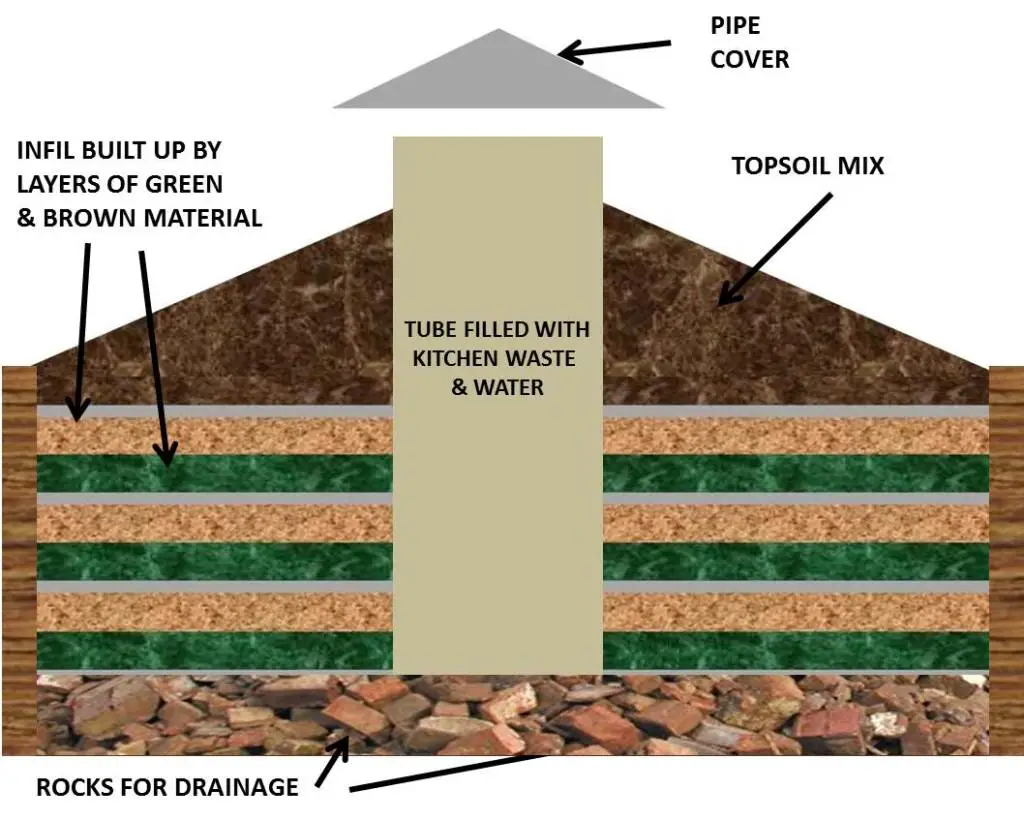
Keep the well especially well watered as this is what will transport the nutrients throughout the growing area. The growing area itself should be almost self-irrigating through the center well but will still need occasional watering during dry spells.
You will find that maintenance in general is a lot less back-ache than a traditional garden, simply because of its raised position, and loose soil/compost mix.
What Can You Plant In A Keyhole Garden?
A keyhole garden is basically just another form of Raised Bed Garden, with a few subtle differences. So you can in fact grow almost anything that you could in a Raised Bed or Square foot garden.
The only real restrictions are maybe high-level plants such as indeterminate tomato (bush tomato varieties are fine), cucumber or other climbers. This is because for practical reasons if your keyhole garden is already 3-foot-high in the center, tall plants would be very exposed to high winds and they would be a little more difficult to harvest.
However this is not a problem if you aim for a shallow keyhole garden which is another popular option.
Low level vegetables such as cabbage, onions, garlic, carrots, sweet potato, potatoes, beetroot, radish or herbs will all prosper very well with this method.
As for the planting layout. Plant the tallest vegetables near the center well and work outwards to the shortest veggies. This means that you can easily gain access over the onions for instance to reach your bush tomato plant behind them.
This technique will also ensure that all the plants get an equal amount of sunshine – unless you like in a hot climate where you may want some brood-leaved plant to shade others?
Keyhole gardening is in fact a good example of Permaculture gardening, in that the grower contributes to the whole organic gardening process via the kitchen scraps etc that are thrown into the center well.
With purely organic gardening the grower does their best not to interfere with the natural process and promotes the use of natural fertilizers instead.
Either way, the Keyhole garden is yet another no-dig gardening methods that offers great results for the least effort – once the ground work has been completed.

